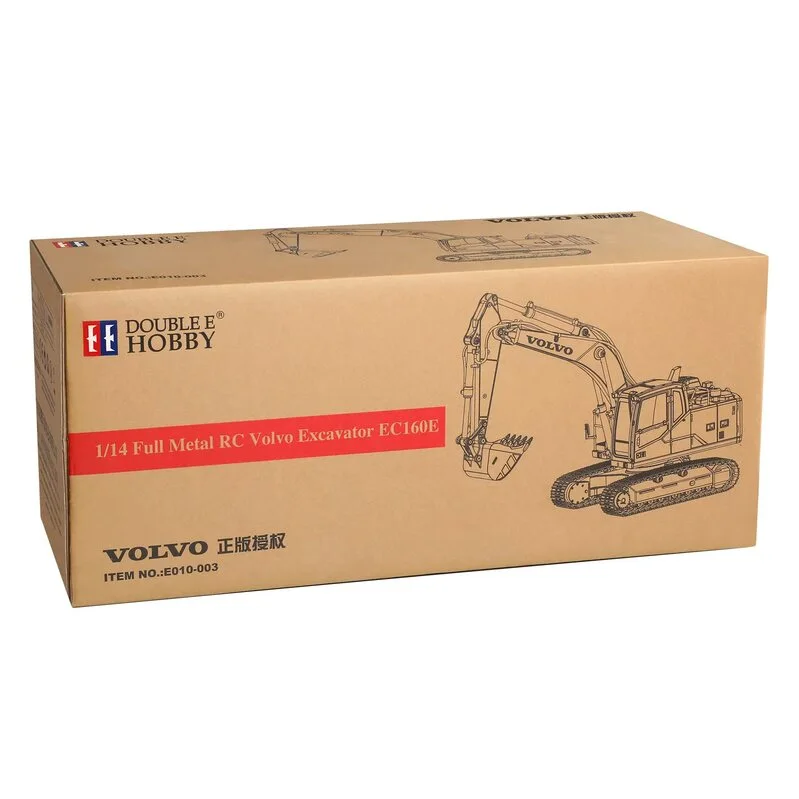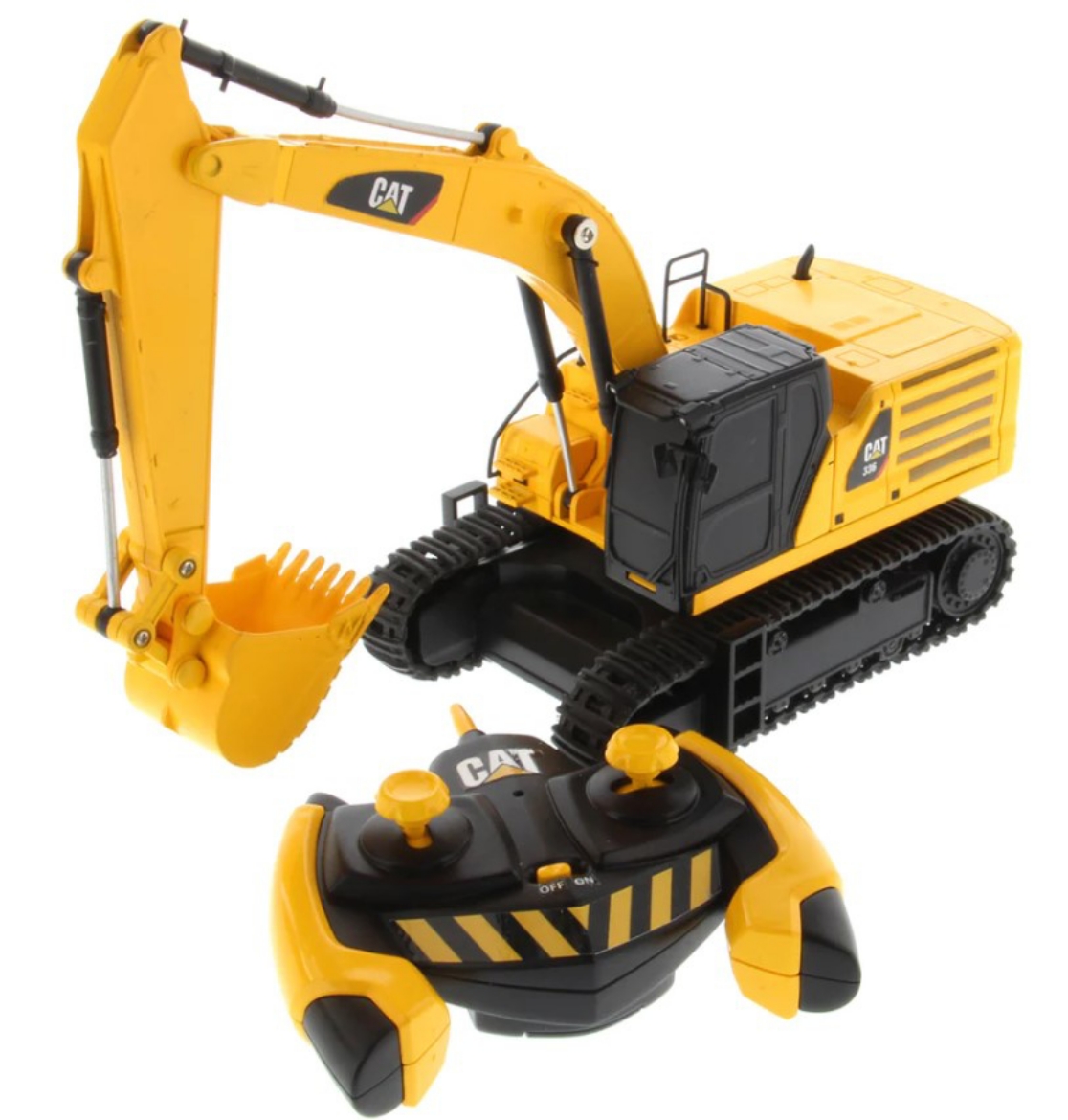The Vital Attributes of Excavator That Keep It a Must-Have Device
Excavators are crucial in the building and construction and landscape design sectors. Their flexible add-ons enable a variety of tasks, from excavating to demolition. Furthermore, they boast exceptional excavating depth and reach, powered by durable engines. Operator convenience and portable layouts improve usability in numerous atmospheres. What genuinely establishes excavators apart are their sophisticated hydraulic systems and durability. Comprehending these features can clarify why they are considered necessary devices on any type of job site.
Versatile Attachments for Improved Performance
Excavators are effective machines on their own, the addition of flexible add-ons significantly enhances their capability. These attachments change a standard excavator into a multi-purpose device, ideal for a selection of jobs. Buckets, as an example, been available in numerous sizes and shapes, making it possible for operators to dig, scoop, and relocate products effectively. Hydraulic thumbs can be included for boosted gripping and handling of cumbersome items, such as logs or rocks.Furthermore, specialized add-ons like breakers and augers enable exploration and demolition job, expanding the excavator's utility on building websites. remote control excavator. Grapples are another choice, ideal for arranging and relocating particles. This adaptability not only raises performance but also minimizes the need for several machines, conserving time and expenses. By furnishing excavators with the best attachments, drivers can take on varied tasks, making them vital in the construction sector
Superior Excavating Deepness and Reach
Excavators are developed with premium digging depth and reach, permitting them to navigate in limited rooms and gain access to hard-to-reach areas. This capability is important for numerous building and construction and excavation tasks, where standard equipment may fall short. With adjustable boom arms and extendable tracks, excavators can quickly browse irregular surface while maintaining stability.The excavating deepness can differ considerably among models, usually varying from 10 to 25 feet, depending on the style and function. This function allows operators to excavate foundations, trenches, and other deep structures successfully. Additionally, the reach of an excavator enables for accurate excavating and material handling without rearranging the maker frequently, saving time and labor costs.Ultimately, the exceptional excavating depth and reach of excavators make them vital for professionals seeking to complete intricate tasks with accuracy and performance. Their convenience boosts performance on work websites, showcasing them as a vital device in modern-day building.
Powerful Engine Performance

Powerful engine efficiency plays a pivotal role in the capabilities of an excavator when it comes to efficiency and productivity on building websites. A robust engine creates significant horsepower, enabling the maker to take on sturdy tasks effortlessly - remote control excavator. This strength equates into faster cycle times, allowing drivers to complete projects extra quickly.Additionally, powerful engines provide the needed torque to manage tough terrains and varied loads, guaranteeing that the excavator can do successfully under various problems. Whether it is raising, excavating, or relocating products, the engine's efficiency straight influences the general operational performance of the machine.Furthermore, improvements in engine modern technology have actually brought about enhanced fuel performance, reducing functional prices while maintaining power output. Ultimately, the engine's efficiency works as the backbone of an excavator, verifying its condition as a crucial device in the building market
Advanced Hydraulic Equipments

Improved Raising Capability
A considerable enhancement in raising capability can be credited to advanced hydraulic systems located in contemporary excavators. These systems utilize high-pressure fluid to create higher pressure, allowing drivers to lift much heavier lots effortlessly. The design behind these hydraulics warranties peak performance, offering an outstanding power-to-weight ratio that enhances overall efficiency. As a result, excavators can take on requiring tasks, such as lifting huge products or devices, without jeopardizing stability. Additionally, the robust layout of hydraulic parts adds to boosted sturdiness and reliability, making them ideal for various building and construction atmospheres. This improved lifting capacity not just lowers the moment needed for projects but also decreases the need for additional equipment, confirming crucial for both productivity and cost-effectiveness in the construction market.
Boosted Accuracy Control
Although standard excavators usually fought with accuracy, contemporary hydraulic systems have actually transformed control mechanisms, allowing drivers to perform jobs with amazing accuracy. These sophisticated systems utilize proportional control valves that allow for smoother and more responsive activities, considerably decreasing the margin for error. Operators can now carefully tune the excavator's activities, making it less complicated to browse limited spaces and handle delicate materials. Improved feedback systems even more notify operators of real-time efficiency, ensuring optimal control between the device and operator. This increased additional hints accuracy not just improves efficiency but also improves safety on work websites, decreasing the danger of mishaps. Consequently, contemporary excavators outfitted with innovative hydraulic systems are vital tools for building and construction and excavation tasks requiring thorough accuracy.
Driver Convenience and Visibility
Operator comfort and visibility are essential parts in the style of modern excavators (remote control excavator). Features such as ergonomic seat layout, boosted exposure options, and efficient control layouts significantly enhance the operator's experience and performance. Prioritizing these elements warranties that operators can work properly and safely in various conditions
Ergonomic Seat Style
Convenience and exposure are paramount in excavator layout, with the ergonomic seat playing a crucial function in visit homepage improving the driver's experience. An ergonomic seat is engineered to sustain the driver's body, lowering fatigue throughout lengthy hours of operation. Flexible features, such as seat height, back-rest angle, and lumbar support, cater to private choices and advertise perfect posture. These modifications enhance convenience and enable the driver to keep emphasis on jobs without pain. Additionally, a properly designed seat can give better side support, allowing for smoother handling when the excavator functions. This thoughtful design not only increases performance yet likewise contributes to general security, guaranteeing that operators can execute their responsibilities properly and effectively.
Boosted Exposure Features
The style of an excavator expands beyond just the seat, with boosted exposure features playing a significant role in operator convenience and total safety and security. Big home windows and purposefully positioned mirrors give drivers with a clear sight of their environments, decreasing dead spots. This design factor to consider permits far better spatial understanding, which is crucial in hectic work atmospheres. On top of that, many excavators include rearview electronic cameras and progressed tracking systems that help operators in maneuvering tight rooms. The combination of these presence features not only promotes safety and security but also lowers operator fatigue by enabling simpler monitoring of workspace. Eventually, enhanced visibility contributes to much more effective procedures and aids assure that excavators can do their tasks efficiently and securely.
Control Format Efficiency
While handling facility job sites, an effective control design significantly improves both operator comfort and visibility. A well-designed control arrangement warranties that operators can access necessary functions with marginal effort, lowering tiredness during lengthy hours. Ergonomic joystick positionings and user-friendly button plans allow for seamless procedure, allowing operators to keep concentrate on the task available. Additionally, clear presence of both the workplace and the control board is vital for safety and security and accuracy. Modern excavators frequently include flexible seats and control settings to fit various driver preferences, additionally enhancing convenience. Eventually, an attentively developed control explanation format not only improves efficiency yet also cultivates a safer working environment by allowing operators to respond quickly to changing problems.
Compact Design for Urban Environments
As urban building and construction sites usually face area restraints, a small design ends up being vital for excavators operating in these atmospheres. These machines are crafted to navigate tight areas, enabling efficient ability to move in jampacked job sites. A decreased footprint allows them to function very closely to existing frameworks, decreasing disruption and making best use of productivity.The portable layout frequently includes shorter tracks and a tighter turning span, promoting procedure in slim streets and constrained areas. Furthermore, light-weight products add to alleviate of transport, making it less complex to relocate the excavator from one area to one more within the city landscape.Additionally, lots of small excavators are outfitted with functions such as functional attachments and extendable arms, enhancing their functionality while preserving a little size. This adaptability enables operators to take on a selection of tasks, from excavating to demolition, all while suitable seamlessly right into the restrictions of metropolitan atmospheres.

Sturdiness and Maintenance Considerations
Durability stands as an important consider the performance and long life of excavators, particularly sought after metropolitan atmospheres. These devices undergo strenuous conditions, consisting of varying dirt kinds, extreme temperatures, and high-frequency use. High-grade materials and robust building and construction are essential for guaranteeing that excavators can hold up against these difficulties without compromising functionality.Regular maintenance is equally vital in maintaining resilience. Scheduled evaluations, timely oil adjustments, and the replacement of used parts add substantially to an excavator's life-span. Operators should additionally take notice of hydraulic systems, tracks, and undercarriages, as these parts often birth the burden of wear and tear.Investing in long lasting excavators with comprehensive maintenance strategies improves reliability and minimizes downtime, eventually leading to boosted performance on construction websites. Comprehending the interplay in between durability and maintenance is important for any person thinking about the acquisition of an excavator for city jobs.
Regularly Asked Inquiries
How Do Excavators Compare to Other Building Devices?
Excavators stand out among construction tools because of their adaptability, making it possible for tasks such as excavating, grading, and training. Compared to others, their hydraulic capabilities offer greater performance and power, making them essential on numerous job websites.
What Safety And Security Includes Are Consisted Of in Modern Excavators?
Modern excavators integrate different safety and security functions, consisting of rollover defense systems, alarms, and progressed presence improvements. These components interact to minimize risks, ensuring operator safety and security while boosting performance on building sites and various other requiring atmospheres.

Can Excavators Be Utilized in Winter Season Conditions?
Excavators can certainly be utilized in winter season problems, offered they are geared up with suitable winter accessories and precautions are taken. Appropriate upkeep and changes enhance their efficiency, making sure effective procedure regardless of challenging weather situations.
What Is the Typical Lifespan of an Excavator?
The ordinary life-span of an excavator generally ranges from 7,000 to 10,000 hours of procedure. This period can significantly depend upon maintenance methods, operating conditions, and the certain model's sturdiness and design functions.
How Do I Choose the Right Excavator Dimension for My Job?
Picking the appropriate excavator size entails examining project scope, site conditions, and material kinds. Think about variables like reach, depth demands, and weight capacity to ensure maximum effectiveness and safety throughout operation. Size issues substantially in job success. Additionally, the reach of an excavator enables for precise digging and product handling without repositioning the maker regularly, conserving time and labor costs.Ultimately, the premium digging deepness and reach of excavators make them essential for professionals seeking to finish complex tasks with accuracy and effectiveness. Comfort and exposure are paramount in excavator style, with the ergonomic seat playing an important role in enhancing the operator's experience. The style of an excavator prolongs beyond simply the seat, with boosted visibility features playing a considerable function in driver convenience and total safety. Modern excavators frequently integrate adjustable seating and control setups to fit various driver preferences, further enhancing convenience. Light-weight materials add to alleviate of transport, making it less complex to relocate the excavator from one area to another within the city landscape.Additionally, numerous small excavators are furnished with functions such as flexible add-ons and extendable arms, enhancing their capability while preserving a small dimension.